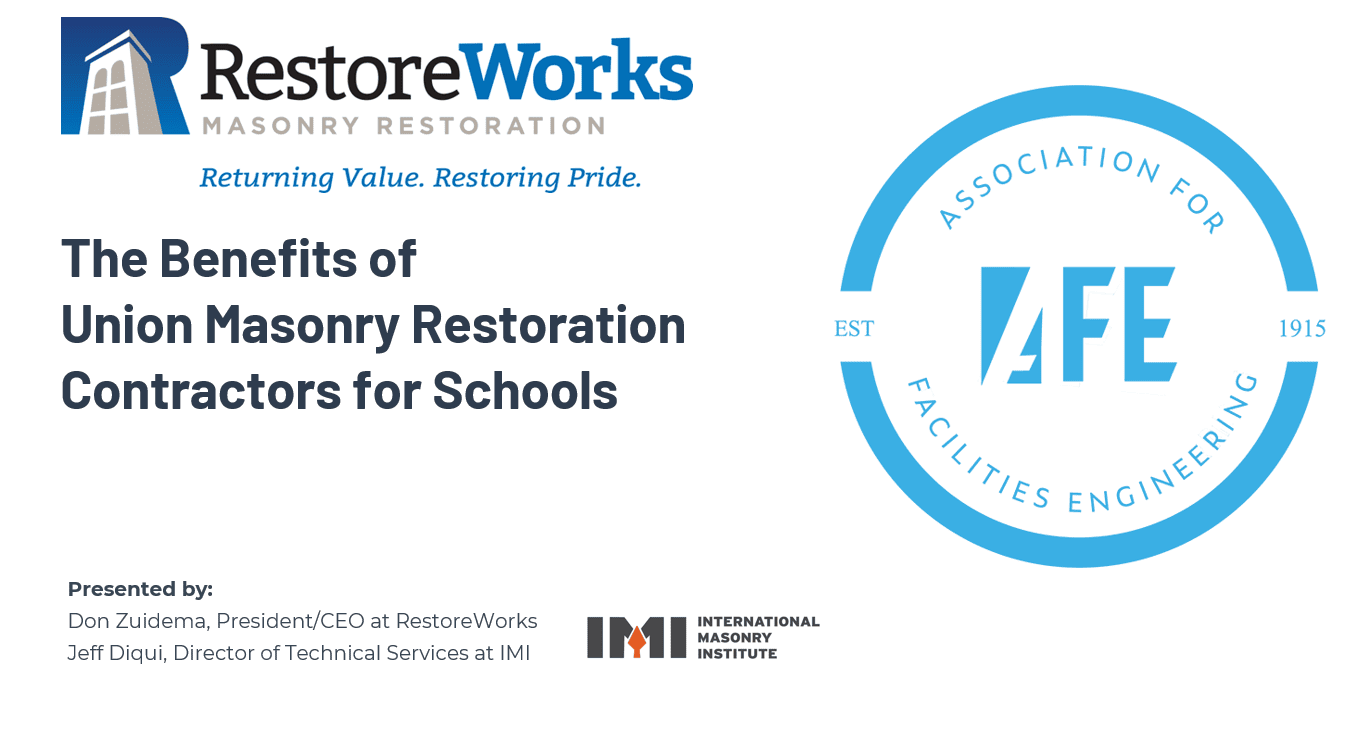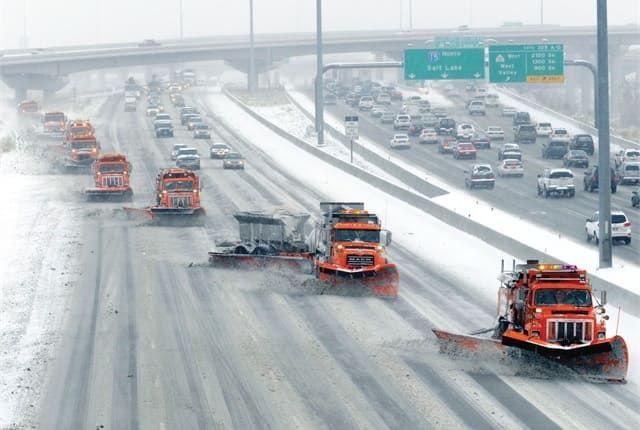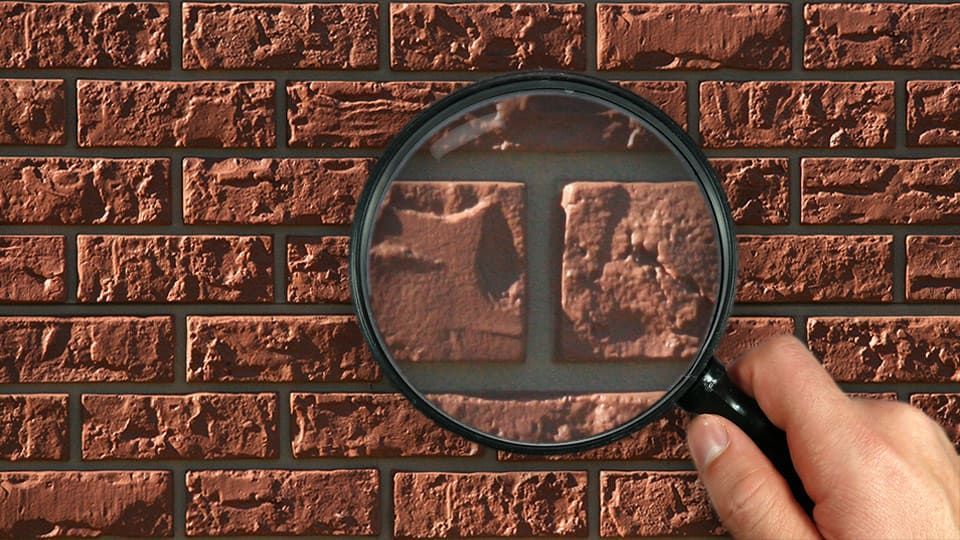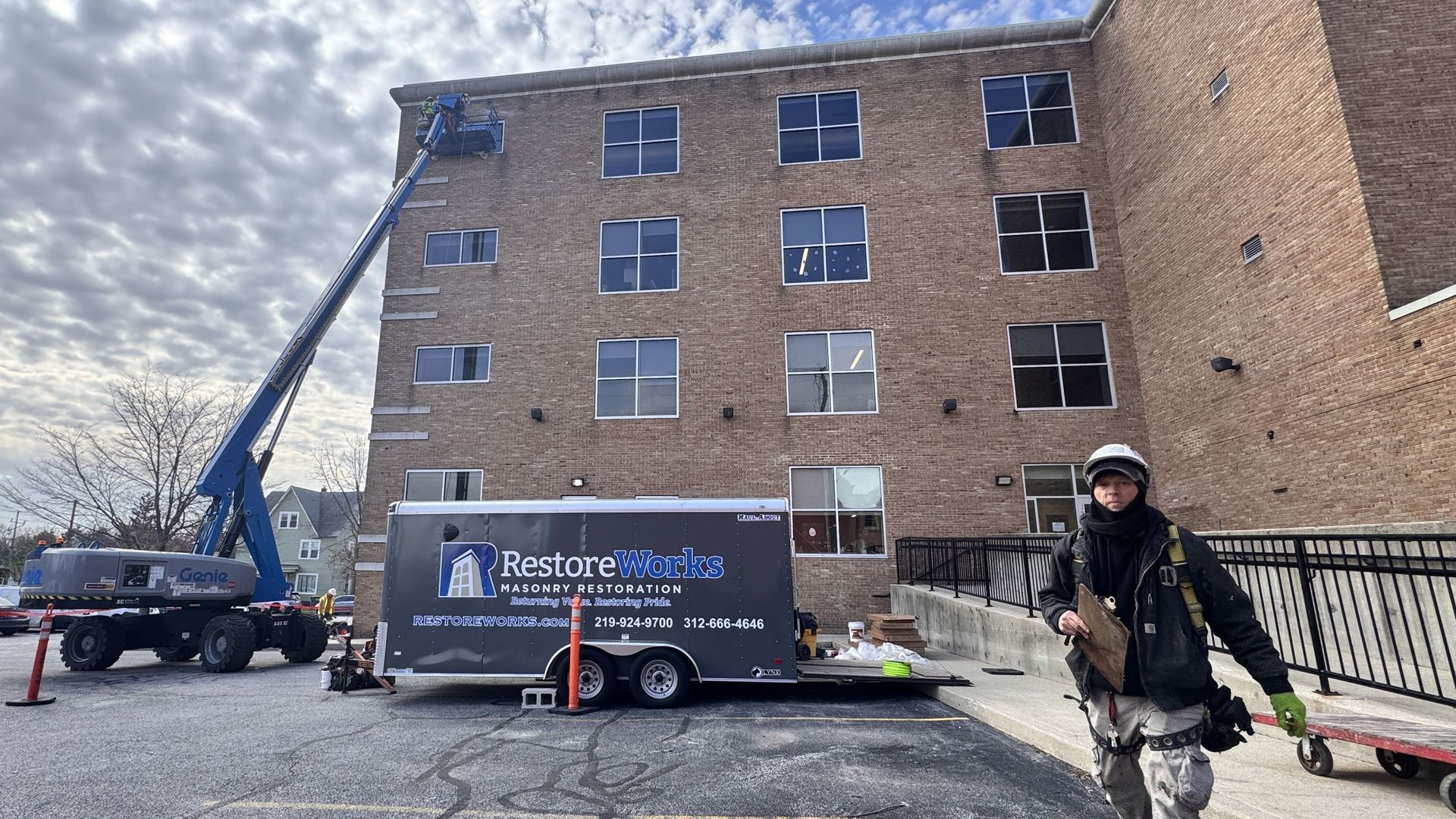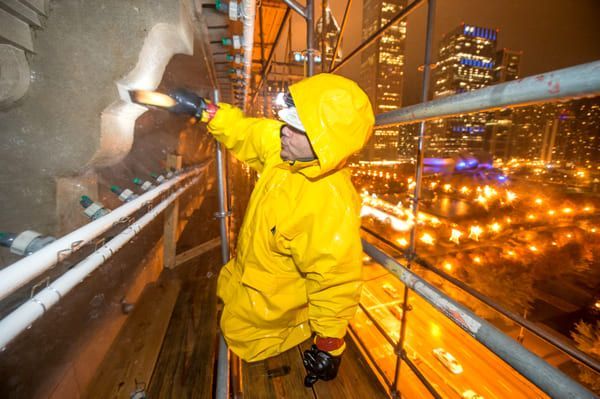Real-World Project Lessons for Safer, Smarter Facility Planning
Across the Midwest, school buildings are facing increasing wear. From cracked masonry and sealant failure to moisture infiltration and outdated components, these issues pose serious risks to safety, scheduling, and long-term value. When restoration is needed, every decision matters, especially when projects must be completed within narrow summer timelines.
This article is based on a recent webinar hosted in partnership with the Association for Facilities Engineering (AFE), where RestoreWorks shared best practices for addressing masonry restoration challenges in school facilities.
At RestoreWorks, we help schools and institutions plan and execute restoration work with safety, coordination, and craftsmanship at the forefront. The following examples highlight how union masonry restoration contractors help schools stay ahead of building issues and avoid costly disruptions.
Common Challenges Facility Teams Face
School facilities staff work under difficult constraints. Based on our experience with dozens of academic projects, these challenges consistently rise to the top:
- Tight summer schedules with only six to eight weeks to complete work
- Safety requirements when working near students and faculty
- Deferred maintenance that leads to structural damage
- Low-bid contractors who create delays or require rework
- Public compliance requirements such as prevailing wage documentation
Each of these factors increases the risk of missed deadlines, budget overruns, or building performance issues. Proactive planning and qualified teams can help reduce these risks significantly.
The Importance of Qualified Partners
During our work with school and institutional buildings, we often collaborate with the International Masonry Institute (IMI). Their technical team supports architects, engineers, and owners with detailed guidance on historic materials, system failures, and appropriate repair techniques. As Jeff Diqui, IMI’s Director of Technical Services, explained during our recent education session, even well-meaning teams can cause damage if they rely on unqualified or undertrained contractors.
IMI also provides hands-on learning opportunities across the country. From mortar matching and terra cotta replication to sealant detailing and embedded steel anchoring, they help design teams better understand what restoration requires and how to do it right the first time. Their technical guidance complements the field training provided by the International Masonry Training and Education Foundation (IMTEF), which prepares union craftworkers for real-world restoration challenges.

St. Casimir Catholic School – Hammond, IN
Full-Envelope Repairs That Prevented Interior Damage
At St. Casimir Catholic School in Hammond, this early 1900s school building had visible deterioration, including cracked and spalling brick, failed mortar joints, and damaged sealants at coping stones. Our team performed full tuckpointing across several elevations, replaced damaged brick, reinstalled coping sealants, and upgraded outdated windows.
This approach improved the building’s weather protection, energy efficiency, and longevity. By addressing all exterior vulnerabilities at once, the school avoided the need for future emergency repairs.

College of American Pathologists – Northfield, IL
Sealant Replacement to Preserve Envelope Performance
At the College of American Pathologists, failing sealants were beginning to compromise the building envelope. Sealants may be a small line item in the construction budget, but their failure often leads to major envelope issues. According to Sika, sealants account for less than 0.1% of construction costs but are the second most common source of complaints from building owners.
At this facility, we replaced aging, UV-damaged sealants around windows, expansion joints, and control joints with high-performance silicone sealants as part of our caulking and sealant services. The work was completed quickly and without disrupting building operations.
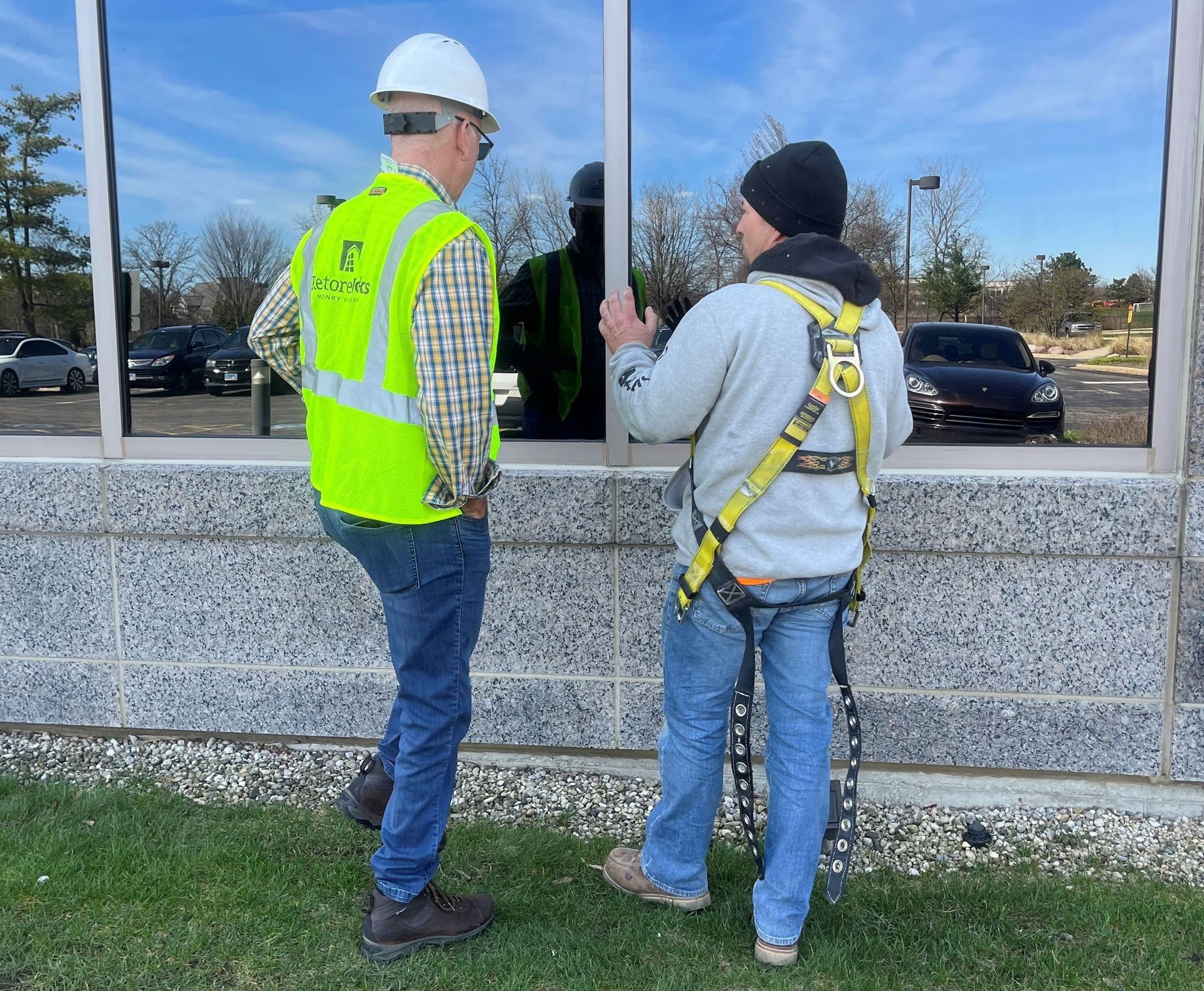
Evanston Township High School – Evanston, IL
Coordinated Summer Work Completed On Time
At Evanston Township High School, the mortar joints on the east elevation had deteriorated significantly due to years of exposure. Rather than wait for further damage, the district initiated planning early in the winter, which allowed enough time to scope the work, secure funding, and coordinate with other trades.
RestoreWorks worked alongside KGH and Riddiford Roofing to align timelines, share site access, and complete the project without delays.
This approach kept the restoration within the summer window and prevented work from extending into the school year. Early collaboration between trades was essential to the project's success.
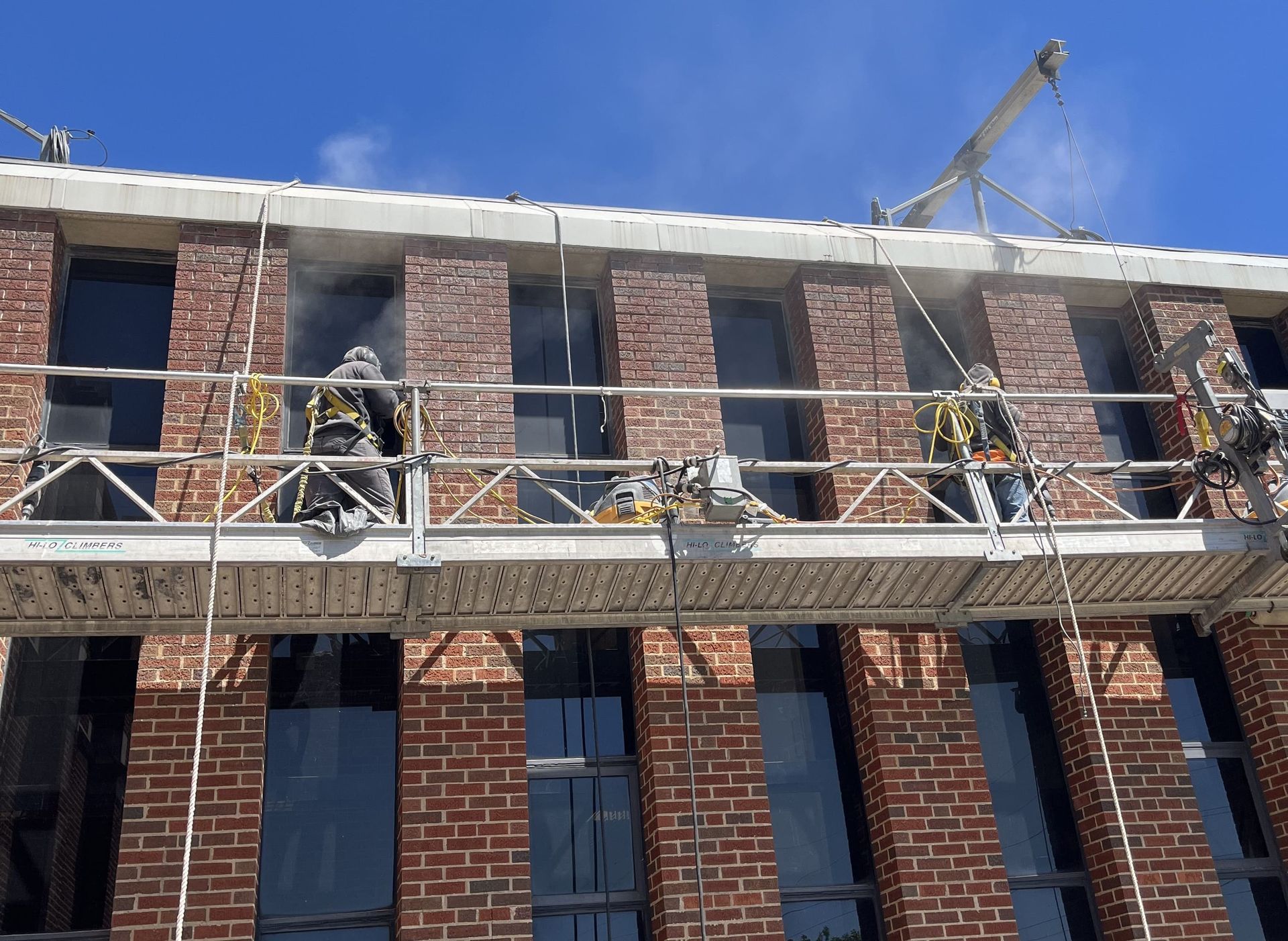
University of Illinois – ETMSW Building – Chicago, IL
Occupied Building with Complex Facade Conditions
The University of Illinois at Chicago’s ETMSW Building is a five-story academic building that remained fully in use during construction. The exterior showed signs of lintel failure, water damage, and aging masonry. Access was limited, and the structure included angled wall sections that required engineered shoring for safe repairs.
RestoreWorks partnered with Chicago Commercial Construction to complete the full envelope restoration. Swing scaffolds were used to reach upper elevations, and a new flashing system was installed to manage water at key transitions. No classes were interrupted, and work was scheduled around campus operations.
This project highlights the importance of contractor experience with active environments and complex logistics.
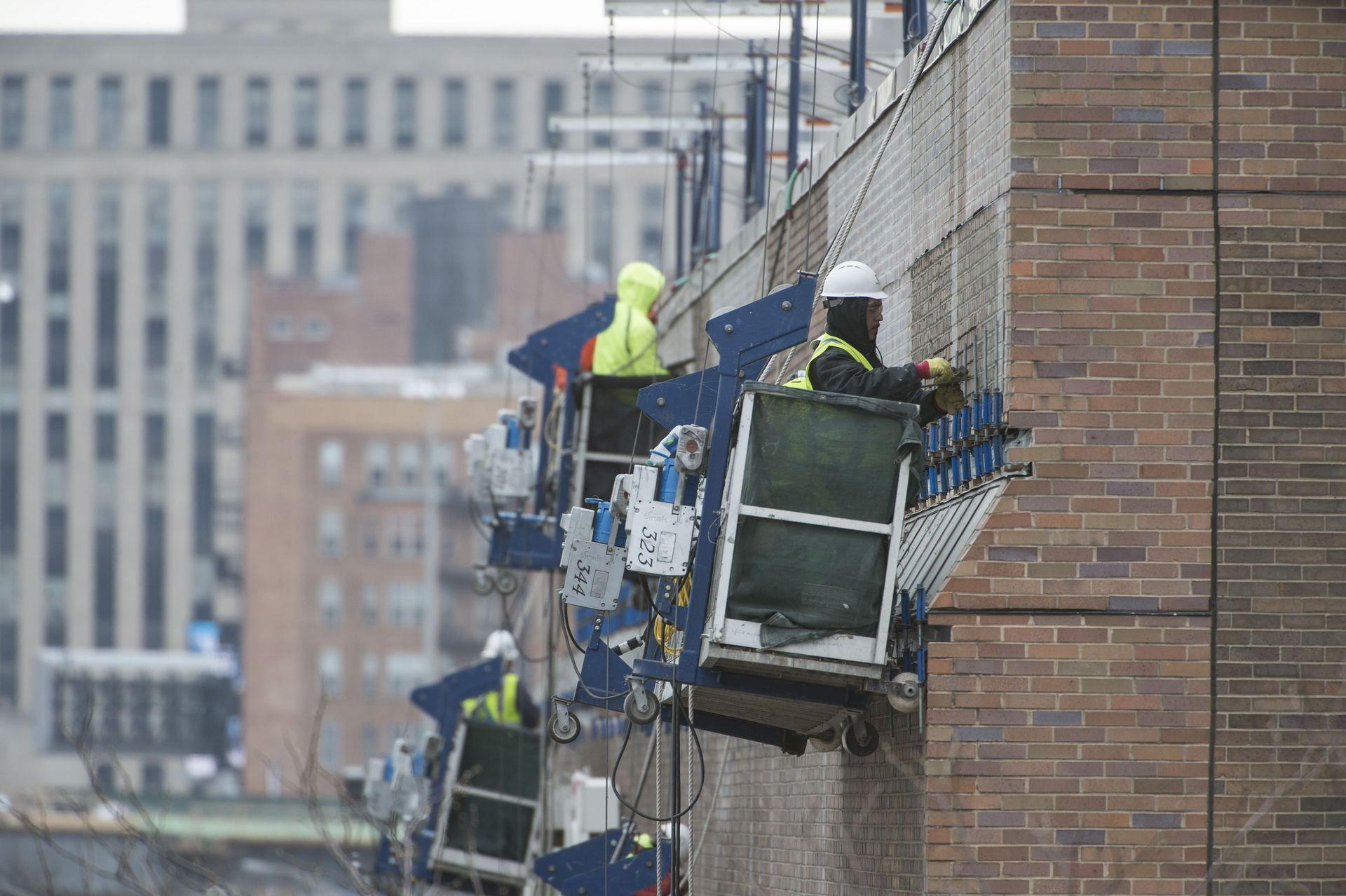
Indiana School for the Blind and Visually Impaired – Indianapolis, IN
Restoring a Historic Campus Without Disruption
The Indiana School for the Blind and Visually Impaired is home to a 1930s-era campus had multiple buildings experiencing water damage, parapet failure, and aging terra cotta features. Over the course of three years, we restored parapets, rebuilt a brick-faced tunnel with an epoxy concrete walkway, and installed new flashing and lintel supports.
One of the most sensitive parts of the project involved replicating original terra cotta details on the historic bell tower. These elements were carefully removed, restored off-site, and reinstalled to maintain the architectural character.
Because the school serves visually impaired students, jobsite safety, communication, and sequencing were especially important.

Why Union Restoration Contractors Make a Difference
Union masonry contractors bring a level of training, accountability, and coordination that is essential for school environments. Consider the following data:
- Predictive maintenance can reduce costs by
30 to 40 percent compared to reactive repairs
(U.S. Department of Energy, as cited by Reliable Plant, 2022)
- Union-led projects experience
21 percent fewer delays than non-union equivalents
(Illinois Economic Policy Institute, 2022)
- A lead time of three to five months is recommended to properly scope, bid, and schedule summer work
- Student and staff safety remains the top priority on every jobsite
What School Facilities Teams Should Do Now
The most successful summer restoration projects begin with early planning. If your building has visible cracks, outdated sealants, or known water infiltration issues, the next step is to schedule a professional assessment.
Start during the winter months to allow time for accurate scoping, funding approvals, and contractor selection. Work with specialists who understand building envelope systems and public project requirements.
At RestoreWorks, we collaborate with school districts, universities, engineers, and trade partners across the region to deliver safe, coordinated, and lasting restoration results.
To discuss your upcoming project or request an assessment, contact our team today.

